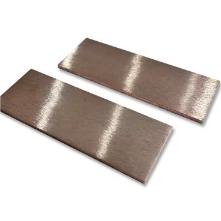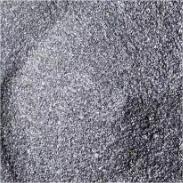**The Acid Edge: Carving Metal Like a Sci-Fi Pro**
(How To Cut Metal Plate With Acid)
Cutting metal with acid sounds like a trick stolen from a mad scientist’s lab. Picture this: no roaring grinders, no flying sparks—just a silent, bubbling chemical reaction eating through steel like it’s butter. If you’ve ever wanted to play with “liquid fire” without the actual flames, this method might be your jam. Let’s break it down.
First, know why you’d pick acid over regular tools. Saws and lasers are great for quick, rough cuts. Acid? It’s for the detail-obsessed. Think intricate patterns, ultra-thin slices, or materials too delicate for brute force. Plus, it’s just cool to say you dissolved metal.
Grab your supplies. You’ll need an acid-resistant container (plastic or glass), acid (hydrochloric or muriatic works), a stencil material (vinyl stickers or heavy-duty tape), a brush, gloves, goggles, and a well-ventilated space. Safety first—acid doesn’t care if it’s melting metal or skin.
Start by cleaning the metal plate. Dirt or grease messes with the acid’s focus. Use soap, water, and a scrubber. Dry it completely. Moisture dilutes the acid, slowing the reaction.
Next, design your stencil. Stick the tape or vinyl onto the metal where you *don’t* want the acid to bite. Press edges firmly—any gaps mean rogue etching. For complex shapes, print a design on sticker paper and cut it out with a craft knife.
Mix the acid. Read the bottle’s instructions. Usually, it’s one part acid to two parts water. Never pour water into acid—it can splash. Always add acid to water, slowly. Stir with a glass rod or plastic stick.
Paint the acid onto the exposed metal. Use the brush to spread it evenly. Bubbles will pop up as the acid chews into the surface. That’s normal. Let it sit. Check every five minutes. Thinner metal cuts faster—maybe 15 minutes. Thick slabs could take hours.
Wait. Impatience ruins everything. If you scrub too soon, the cut stays shallow. Let the acid work until the groove looks deep enough. Neutralize the acid when done. Baking soda mixed with water stops the reaction. Pour it over the metal, then rinse with water.
Peel off the stencil. If residue sticks, use acetone or rubbing alcohol. Inspect your cut. Rough edges? Sand them down. Want deeper lines? Repeat the process. Acid etching is forgiving—just cover the areas you want to keep and hit it again.
Why does this work? Acid reacts with metal, creating metal salts and hydrogen gas (those bubbles). It’s a controlled corrosion. Different acids work on different metals. Hydrochloric acid loves steel. Ferric chloride is best for copper or brass.
Tips for pros: Work outside or near a fan. Fumes are nasty. Test your stencil on scrap metal first. Use a timer—over-etching weakens the metal. Store leftover acid in a labeled, airtight container. Keep it away from kids, pets, or curious roommates.
This method isn’t for big projects. It’s slow, messy, and needs patience. But for tiny, precise cuts? It’s magic. Imagine making jewelry, custom gears, or art pieces with lines smoother than any laser. Plus, bragging rights—you tamed acid to do your bidding.
Remember, safety isn’t optional. Gloves, goggles, and ventilation are non-negotiable. Spills happen. Keep baking soda nearby to neutralize accidents fast. Respect the acid, and it’ll respect you back.
(How To Cut Metal Plate With Acid)
Noise-free, flame-free, and weirdly satisfying—acid cutting turns chemistry into craftsmanship. It’s part science experiment, part art project. Whether you’re a hobbyist or a pro, mastering this skill adds a wild card to your toolkit. Just don’t blame us if you start eyeing every metal object wondering, “What if I dissolved a shape into you?”
Inquiry us
if you want to want to know more, please feel free to contact us. (nanotrun@yahoo.com)


